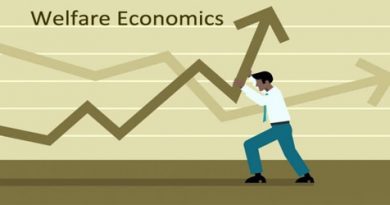Understanding Quarter Over Quarter Q Q Growth Example
Contents
Understanding Quarter Over Quarter (Q/Q) Growth: An Example
What Is Quarter Over Quarter (Q/Q)?
Quarter over quarter (Q/Q) measures an investment or a company’s growth from one quarter to the next. It is commonly used to compare a company’s growth in profits or revenue, as well as changes in an economy’s money supply, gross domestic product (GDP), or other economic measurements.
Key Takeaways
- Q/Q measures the growth of an investment or a company from one quarter to the next.
- It is also used to measure changes in other important statistics, such as GDP.
- Analysts consider Q/Q when reviewing a company’s performance over multiple quarters.
- Quarterly results can be found via the Securities and Exchange Commission (SEC) or on a company’s website.
- Comparing Q/Q information among companies with different quarter start dates can distort an analysis due to seasonal factors or temporary environmental conditions.
- There are other variations on Q/Q, such as month over month and year-over-year.
Understanding Quarter Over Quarter (Q/Q)
Investors and analysts examine financial statements, which are released either yearly or quarterly, to assess the financial health of a company. The quarterly statements are publicly available through the EDGAR database provided by the SEC or a company’s website, and are called 10-Q statements. Analysts look at Q/Q numbers and changes when reviewing a company’s performance over multiple quarters.
Q/Q is a rate of change in performance between one fiscal quarter and the previous quarter. A quarter is generally three months or 90 days. Q/Q measures the changes in the growth rate of different financial numbers and metrics found in the financial statements from one period to the next. Typically, the comparison is between reports from one quarter of the company’s fiscal year with the reports from the previous quarter. Q/Q is calculated as follows:
(Current quarter – previous quarter) / previous quarter
Certain economic reports are released quarterly and compared to previous quarters to indicate economic growth or decline. For example, the gross domestic product (GDP) report, released by the Bureau of Economic Analysis (BEA), is released on a quarterly basis and influences the decisions of the government, businesses, and individuals.
The report shows how GDP has changed from one quarter to the next and can signal possible economic outcomes, such as a recession or depression. An analysis of the change in GDP from quarter to quarter allows policymakers to make policy adjustments to avoid further economic fallout, for example, if they are witnessing a declining GDP.
Variations of Quarter Over Quarter (Q/Q)
Other variations of Q/Q are month over month (M/M) and year-over-year (YOY). M/M measures growth over previous months but tends to be more volatile than Q/Q as the rate of change is affected by one-time events, such as natural disasters. YOY measures changes in performance in one year over the previous year. YOY incorporates more data and provides a better long-term picture of the underlying report figure. The Q/Q rate of change is typically more volatile than the YOY measurement but less volatile than the M/M figure.
Real World Example
The table below shows the Q1 and Q2 earnings of Intel Corporation and IBM Corporation for 2018.
Intel
IBM
Q1 Earnings
Q2 Earnings
Q/Q change
($5,000 – $4,500) / $4,500
($2,400 – $1,700) / $1,700
= 11%
= 41%
Source: IBM, 2018; Intel, 2018
While Intel’s earnings grew by 11% from the first to the second quarter in 2018, IBM’s earnings grew by an impressive 41% Q/Q. However, note that only two consecutive quarters have been examined. An investor would examine several other quarters to see if these changes are a trend or just seasonal or temporary adjustments.
Comparing Q/Q information among companies with different quarter start dates can distort an analysis—the time included may vary, and seasonal factors may become skewed. An investor would have to consider several quarters over a period of time to determine whether changes reflect an ongoing trend or are impacted by external factors. It is important for any investor to remove the effects of seasonality when they can when making comparisons of companies with different quarter start dates.
Comparing Q/Q information among companies with different quarter start dates can distort an analysis—the time included may vary, and seasonal factors may become skewed. An investor would have to consider several quarters over a period of time to determine whether changes reflect an ongoing trend or are impacted by external factors. It is important for any investor to remove the effects of seasonality when they can when making comparisons of companies with different quarter start dates.



